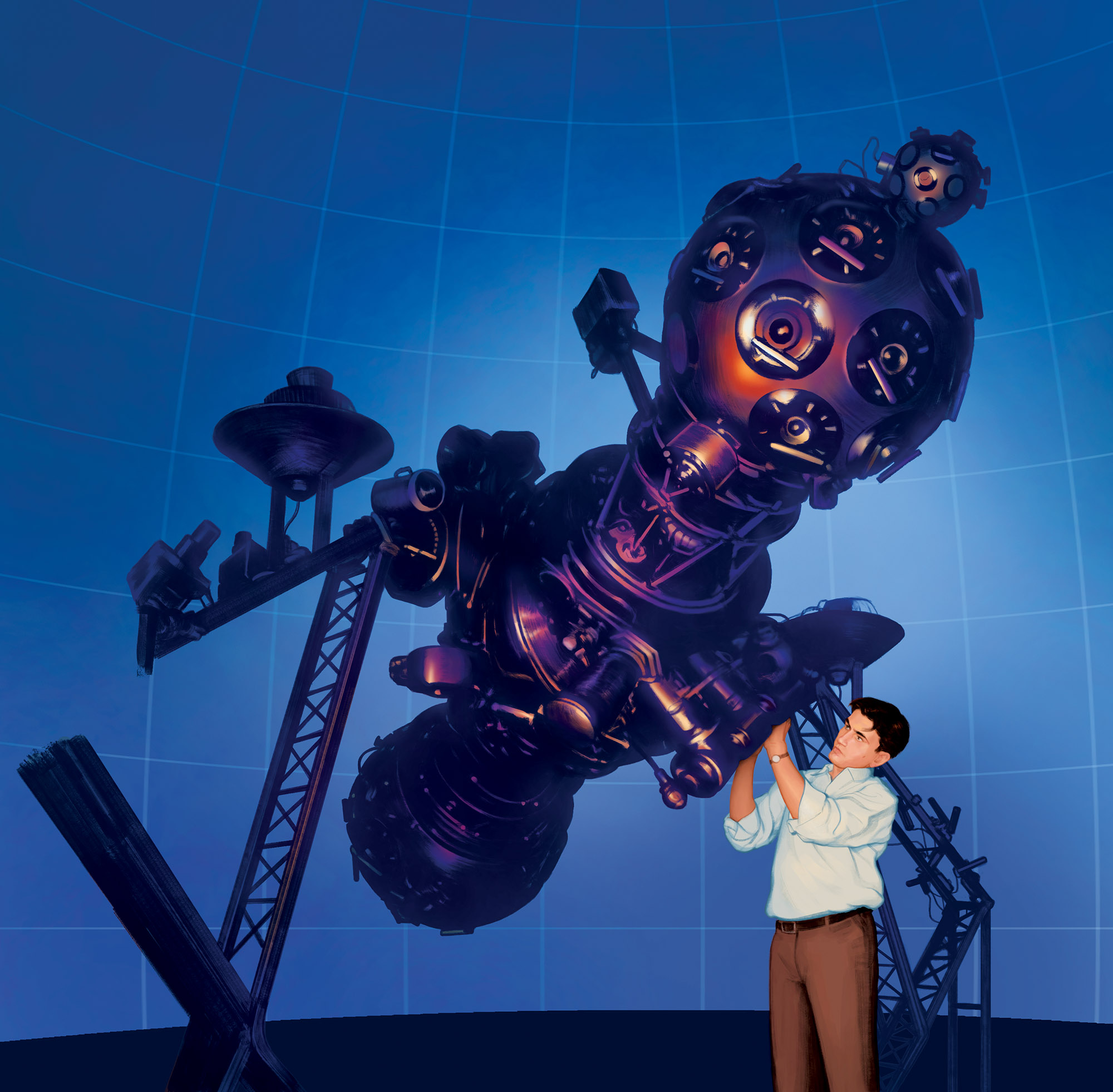A Star Maker and His Machinery
Posted on Nov. 13, 2020
Tony Jenzano’s contribution to the U.S. space program is told in the new book Tony Jenzano, Astronaut Trainer: The Man Who Made the Stars Shine, written by Michael G. Neece ’97.
When Carol “CJ” Jenzano ’69 was growing up in Chapel Hill, her father, Tony, used to bring home from his office visitors in town on business.
These were no ordinary business associates.
“I had a terrible crush on Neil Armstrong,” she recalls with a laugh.
Yes, that Neil Armstrong, the Apollo 11 mission commander, who in 1969 would become the first man to walk on the moon.
“It was because he looked collegiate, and I was used to that look in Chapel Hill,” said Jenzano, who also earned a master’s in education from UNC in 1972. “He was the boy next door, very proper. Mischievous, but not dirty. Did not smoke or curse, and cute as a button.”
She got to know Armstrong personally when he was among the NASA astronauts who came to UNC’s Morehead Planetarium to learn to navigate by the stars — a skill just as handy in space travel as it was for ancient mariners sailing far from familiar shores. Her father was in charge of teaching the Mercury, Gemini, Apollo and Skylab astronauts that skill, using Morehead’s cutting-edge star projector and apparatuses he rigged up.
Her father’s contribution to the U.S. space program is told in the new book Tony Jenzano, Astronaut Trainer: The Man Who Made the Stars Shine, written by Michael G. Neece ’97. It’s the first project beyond pamphlets published by the Morehead Planetarium and Science Center, in conjunction with UNC Press. Filled with illustrations by Benlin Alexander of Tony Jenzano and the astronauts, moonscapes and cosmic vistas, it’s aimed at inspiring elementary school-age students, readers who often have their first contact with UNC visiting the planetarium and other Morehead attractions.
To his daughter, the book is an acknowledgement of all of the work he put into the place — how no task was too small to warrant his attention, how no challenge was too big for his ingenuity.

Tony Jenzano came to the planetarium to install its first star projector in 1949 — and stayed.
“I can honestly say my father was always my hero, such a good role model both in life and work ethic,” she said. “He took the attitude that he couldn’t be the boss of the planetarium until he’d done every job there — taking tickets, ushering, working the control room, narrating shows. He did it all.”
An ingeniously simple idea
Jenzano’s story is both remarkable and improbable. A native of Philadelphia, he was a largely self-taught mechanical genius with only a high school education, learning the electrician’s trade in the Navy during World War II. He came to Chapel Hill to install Morehead’s first star projector in 1949 and never left, becoming director and running the planetarium for more than 30 years before retiring in 1981.
Jenzano, who died in 1997, is remembered by almost everyone who knew him as Morehead’s heartbeat. The planetarium had just five employees in those early days, a fraction of its current staff, and the most significant part of Jenzano’s tenure was the decade and a half when he oversaw astronaut training. It started with an ingeniously simple idea, teaching navigation by the stars so if spacecraft systems failed the “star sailors” wouldn’t be lost in space.
“People who used to sail on old ships, if you didn’t know the stars, you did not get home,” Neece said. “Nowadays everybody’s got GPS. But if we send someone to Mars, they better be able to look up and know which way they’re headed.”
Between 1960 and 1975, 62 astronauts came to sit under the stars in Morehead’s 69-foot-high dome, starting with the original Mercury 7. As Neece recounts in the book, Jenzano’s innovations included rigging the Gemini trainer — a plywood box around a swiveling barber’s chair — to approximate the narrow views from the capsule. Of the 12 Apollo astronauts who walked on the moon, 11 trained with Jenzano.
Besides Jenzano’s ingenuity and the planetarium’s technology, Chapel Hill offered an ideal site, a small town with a population in 1960 of under 13,000. That era’s astronauts were celebrities, regularly mobbed for autographs in public, but they were able to come and go quietly and keep a low profile in Chapel Hill in those pre-Instagram days.
“Tony’s decision to offer the planetarium’s services to NASA for free was probably the most influential decision made in the history of the planetarium, after John Motley Morehead’s decision to build it in the first place,” says Jim Horn, a planetarium technician Jenzano hired in 1969.
Space and time
Neece, a part-time historian and educator at the Morehead who presents shows under the same dome where the astronauts trained, started working there in the early 1990s during his student days as a physics major, long after its space program had ended. And while he never met Jenzano, stories about him and his astronauts were still legion among planetarium old-timers.
Neece has been working on an ambitious history of the planetarium in recent years. But he decided that it would be worthwhile to break out Jenzano’s NASA experience and publish it now because, as the landmark sundial out front of the facility reminds us, time is slipping away.
“I felt like it had an expiration date because all the people involved are either really old or already gone,” Neece said. “This was the most fun writing experience I’ve ever had, in part because I give shows at the planetarium, and I love relating to kids. In the text, I can almost hear my own voice anticipating the curious questions kids come up with. It just seemed like one of those stories that needed to be told.
“You can relate to how amazing this guy was, which is the heartbeat of any kids’ book — having a relatable character you can look up to and aspire to be like. In an era where we all feel powerless and locked up, this is the story of making a big difference even if you’re a little guy.”
— David Menconi
Thanks for reading the Carolina Alumni Review
Carolina Alumni members, sign in to continue reading.
Not yet a member? Become one today.
